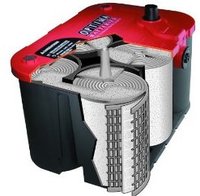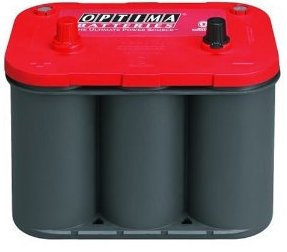
Car battery problems remain one of the most common issues that all drivers face at one time or another. The average automotive battery will last anywhere between three and five years.
With the car consumer owning a vehicle on average of 5 to 8 years problems with the battery may be experienced a few times during the ownership cycle.
Please remember that when you pop the hood to take a look, you must always wear safety glasses. You should also be in a well ventilated area. The acid inside is combustible and can be dangerous! Although it’s rare to have a battery blow up I have seen it more then once. Some call me paranoid I say I’m safety conscious.
Car battery failures are more common in the winter months because the cold weather can affect the chemical reaction that provides the internal power. Old batteries can fail just as easily in the summer months.
I lost track of how many vehicles I have jump started this year. I would say January was just as busy as July for me. I can also tell you that it is very common for me to jump start the same vehicle over and over again before the driver gives in and actually buys a new one.
Many people will buy chargers and testers when their money would actually be better spent on a new battery. Don’t get me wrong these are good purchases to have in the garage but if funds are limited you could be better off putting them toward the problem. Also note that getting the right size is important. The store may help you on this but it is nice to know for yourself.
If you’re lucky enough to have the original battery in the vehicle at the time of replacement this unit should have replacement requirements clearly marked.
One of the most important specifications to follow would be the CCA of the replacement battery. CCA stands for cold cranking amps and is basically how powerful the battery is.
A good analogy would be if you replaced a 45 W light bulb you wouldn’t want to put a 25 Watt bulb in its place. In the inverse you also would not want to replace it with a 100 W bulb because it would be too bright and use too much energy.

On today’s passenger vehicles the average cold cranking amps specifications can be as low as 300 CCA and as much as 800 CCA. This will be determined by the size of the engine as well as its internal configuration such as compression ratio.
Also diesel engines generally require higher rated cranking amps. Going slightly above the recommended CCA rating is okay but going slightly below can shortened the life span. Batteries that are to small can cause other car battery problems such as slow engine rotation on cold start up.
Physical Size of the Replacement Battery
In addition to selecting a battery that has the proper capacity and rating you also want to get one that fits properly in the tray holder. The provided compartment can sometimes be unforgiving. One of the most important things about a replacement battery would be its total height.
Some vehicles have a very limited area to mount the replacement. Several times a customer has asked me to replace a battery and given me one that was on sale, met the power requirements but would not physically fit in the compartment. In one instance the hood would not close for example. When finding a replacement you should take some measurements of height, depth, width and compare to the new one.
You also want to make sure that the terminals, positive and negative are in the same exact configuration as the old battery. I have seen do-it-yourself mechanics try to stretch the cables to fit the replacement. This is a bad idea because the battery can shift while driving and the weight can overcome the strength of the cables. This can create a situation where even a jump box will not help.
Getting the Most out of New Batteries
Prevent car battery problems in the future! Corrosion is commonly caused by the gases emitted from the cells that are rich in electrolyte. In climates where there is large temperature changes chemical rich condensation can be generated.
This electrically generated oxidation can affect and destroy the cable end connections and the terminals. If left unchecked further damage can occur to the hold down strap, compartment tray and the body of the vehicle around these areas as well.
Corroded connections increase the resistance at the terminals, which reduces the applied voltage to the vehicle’s electrical system. But the main problem with corrosion on the terminals is that improper charging is the most common result. This can lead to car battery problems that will strand drivers and shorten the lifespan. Corrosion on the top and sides can also create a path for current to flow. This can allow a slow discharge over time. More than a couple of times I have had a driver complaint that the battery goes dead when the vehicle sits in the driveway for a few days.
Upon inspection you could clearly see a condensation layer that happens to be rich in electrolyte lying between the two terminals on the top or sides.
This can cause a physical connection between the negative and positive terminals. When current flows from positive to ground with the key off this would be a slowly draining condition known as a parasitic drain.
To me the most important part about understanding your battery is that this component does have a lifespan. Know how old yours is and don’t hesitate to break out your wallet when it is time to replace it. The frustration of car battery problems and repeat jump starts on your vehicle can be far worse than the financial expenses of replacing it.
On this next page I have more information about testers and chargers. Also more information on the leading causes of a dead car battery. Bookmark or share this car battery problems page with a friend.
See Mark Gittelman’s Awards & ASE Certifications on Google+.

These pages are from my car repair section that provides articles about common issues with cars. See some more information about Diy auto repair. The homepage provides a run down about the other types of vehicle information that is provided here. This next link takes you from car battery problems to more automotive answers.
